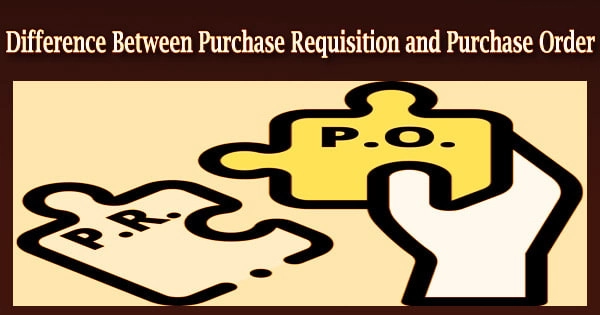The fundamental distinction between a purchase request and a purchase order is that a purchase requisition is used to obtain internal approval to acquire goods or services, whereas a purchase order is used to actually purchase such items. Material input and outflow occur at regular periods in a manufacturing company.
Because production can only take place if there is enough material. In this way, the need for material arises from time to time. Permission to acquire material is sought by numerous departments through purchase requisitions.
Furthermore, the approval of the purchase requisition triggers the placement of an order for the material. The requisition is approved by the buying department. The purchasing department prepares purchase orders for this reason in order to procure items and get them into stores on time.
Purchase Requisition (PR):
A purchase requisition is a form that an employee submits to their company’s finance department to request permission to acquire products or services from outside the company. After a purchase requisition has been accepted, a buy order can be used to make the actual purchase of goods or services.
It is used to alert the purchasing department that materials are required. It’s also utilized to assign ownership of the purchase request. Purchase requisitions can also be used as a reference in the future.
The purchaser creates the purchasing request forms, which are then submitted to the finance department. It’s a method of obtaining approval to begin the procurement process with a third-party vendor. The purchase requisition (PR) is a document that starts the process of purchasing goods or services.
The purchase requisition is used by the finance department to coordinate reports with the accounting department. Managing and tracking spending may not be a problem for small enterprises with a modest amount of purchases.
A proper approach for tracking expenses is necessary in medium to big enterprises with a high volume of purchases. Having an uniform buy request and purchase order system is critical for smooth and effective operations, regardless of the size of the company.
Purchase Order:
The purchase order, sometimes known as a PO, is a document that outlines the specifics of a purchase. A buy order is created once the request has been approved and the supplier to whom the order will be supplied has been chosen.
It is a form used by the purchasing department to approve the supplier to furnish the specified products at the agreed-upon conditions and price. The PO should clearly indicate the material requested as well as the price. The purchase order system is intended to help you keep track of your purchases.
Other personnel may fill out purchase orders for approval if a company does not use purchase requisitions. Purchase orders are important documents in the accounting system because they speed up recordkeeping. They assist businesses in effectively preparing for audits.
The PO becomes legally binding after the vendor receives and signs the document. For internal transactions, purchase orders can also be sought. When one department of a company wants to buy goods or services from another, this happens.
Key differences between purchase requisition (PR) and purchase order (PO):
- A purchase requisition is a formal request for items from the purchasing department. When the stock level of a material approaches the reorder level, the stores department creates a buy demand.
- A purchase order, on the other hand, is a written request to the supplier for certain materials. Its purpose is to reaffirm the supplier’s supply terms.
- A Purchase Requisition is an internal document that is used to obtain approval to purchase materials between departments or within departments. A purchase order, on the other hand, is an external document. This document is both formal and legally binding. As a result, the procurement firm and the goods provider are tied together.
- Purchase requisitions are prepared by an authorized individual who is an employee of the concerned department. Purchase orders are prepared by the company’s purchasing department.
- Five copies of the purchase order are prepared by the firm. The original copy is sent to the supplier by the company. The duplicates are sent to the departments that require materials, such as the receiving department, the cost accounting department, and the department that requires the items. The last copy is kept by the purchasing department.
- A purchase requisition, on the other hand, is made as a group. In most cases, two copies are made. One of them is forwarded to the purchasing department. And the stores maintain the last copy to keep track of the orders they’ve received.
- When material and supplies are needed, the department sends a purchase demand. The corporation, on the other hand, issues purchase orders when it is necessary to place an order for materials and supplies.
- The purchase requisition is delivered to the buy manager. The seller, on the other hand, receives the purchase order.
The growing need to reduce procurement prices and streamline procurement processes are the primary drivers of market expansion. Procurement efficiency is improved by automating essential procurement operations such as buy requisition and purchase order processing.
Purchase requisitions and purchase orders are both critical components of the purchasing process. The purchase cannot be initiated or finalized without these two items. Cflow is a robust cloud workflow automation platform that helps businesses enhance productivity and optimize operations.
















